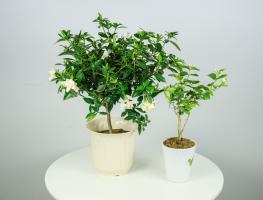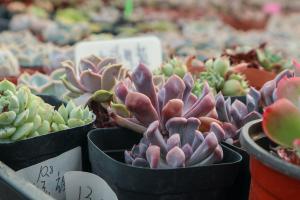When is the Last Day to Plant Tomatoes?
Tomatoes are one of the most popular vegetables for home gardeners. They're delicious, nutritious, and can be used in many different recipes. However, timing is crucial when it comes to planting tomatoes. If you plant too early or too late, your plants may not produce as many fruits or could even die. So, when is the last day to plant tomatoes? Let's find out.
Frost Dates
The last day to plant tomatoes depends on your location's typical frost dates. Frost dates are the average dates when temperatures drop to a level that can damage or kill plants. In the United States, the frost dates vary from region to region. In general, the northern states have shorter growing seasons, while the southern states have longer growing seasons.
In the northern states, the last day to plant tomatoes is usually around two weeks after the average date of the last frost in the spring. In the southern states, you can plant tomatoes earlier and later than in the north, depending on your local conditions.
Planting Indoors or Outdoors?
Another factor that affects the last day to plant tomatoes is whether you're planting them indoors or outdoors. Planting tomatoes indoors allows you to start them earlier and gives you more control over the growing conditions. However, you'll need enough space, light, and time to grow seedlings and transplant them later.
If you're planting tomatoes outdoors, you'll need to wait until the soil temperature is warm enough to support growth. This is usually around 60°F (15°C), depending on the variety of tomato. If you plant too early, the soil may be too cold, and the seeds may not germinate. If you plant too late, the plants may not have enough time to mature before the first frost.
Determining Your Last Planting Date
To determine your last day to plant tomatoes, you'll need to consider your frost dates, the tomato variety, and whether you're planting indoors or outdoors. Here are a few steps to help you figure it out:
Find out your region's average frost dates (use an online tool or ask a local gardening expert).
Decide whether you're planting indoors or outdoors, and choose a tomato variety that suits your growing conditions and goals (e.g., determinate or indeterminate).
Count backward from your first expected frost date to determine the number of days you have to grow tomatoes. This will give you an estimate of your last planting date.
Adjust your last planting date based on your tomato variety's maturity rate, your local climate, and your gardening experience.
Remember that these are general guidelines, and your specific situation may vary. Factors like soil quality, watering, fertilizing, and pest control can also affect your tomato plants' growth and yield. With some research, planning, and patience, you can enjoy a bountiful harvest of delicious homegrown tomatoes.

 how many times do yo...
how many times do yo... how many planted tre...
how many planted tre... how many pine trees ...
how many pine trees ... how many pecan trees...
how many pecan trees... how many plants comp...
how many plants comp... how many plants can ...
how many plants can ... how many plants and ...
how many plants and ... how many pepper plan...
how many pepper plan...






























